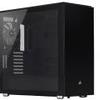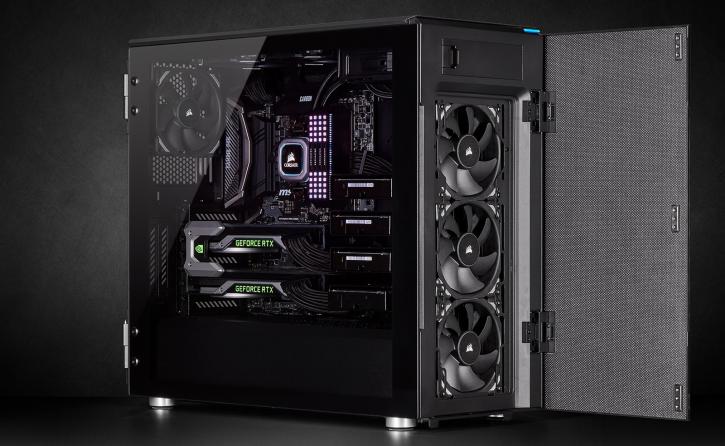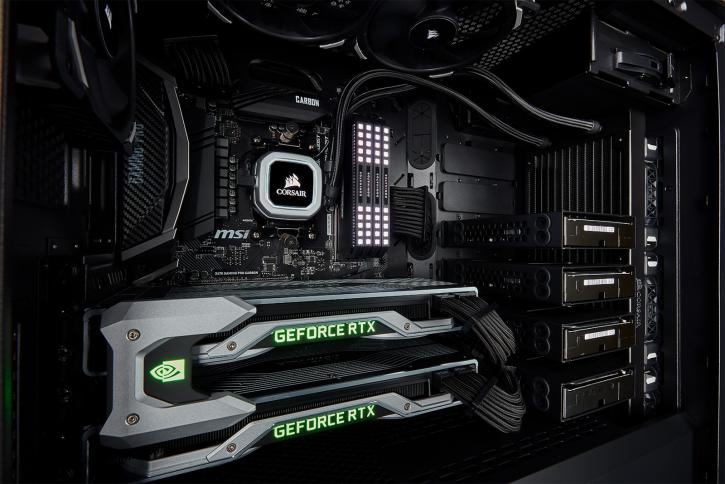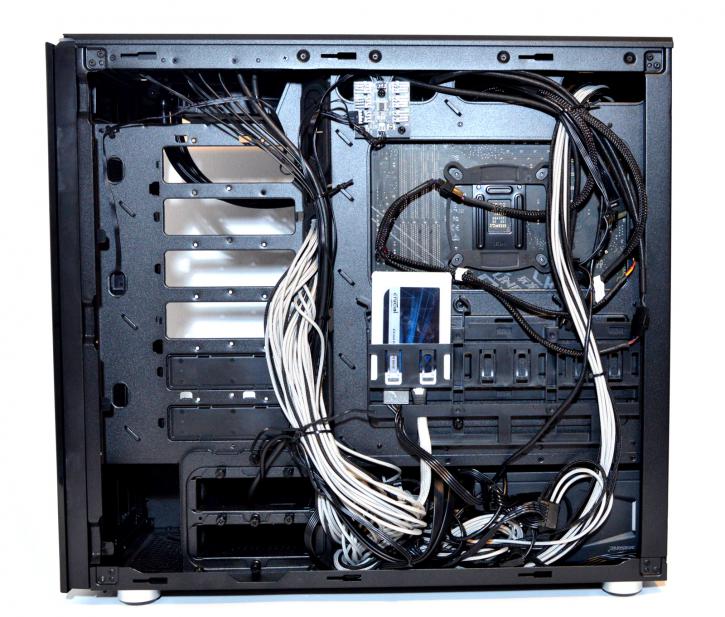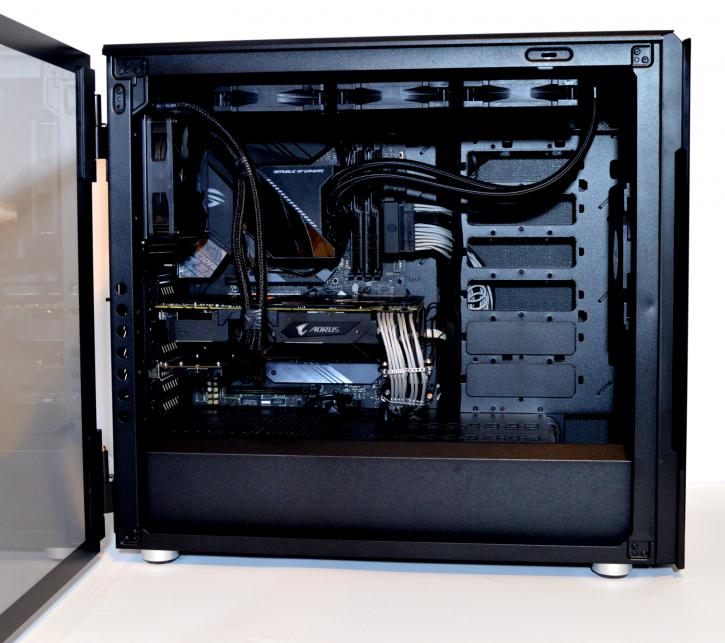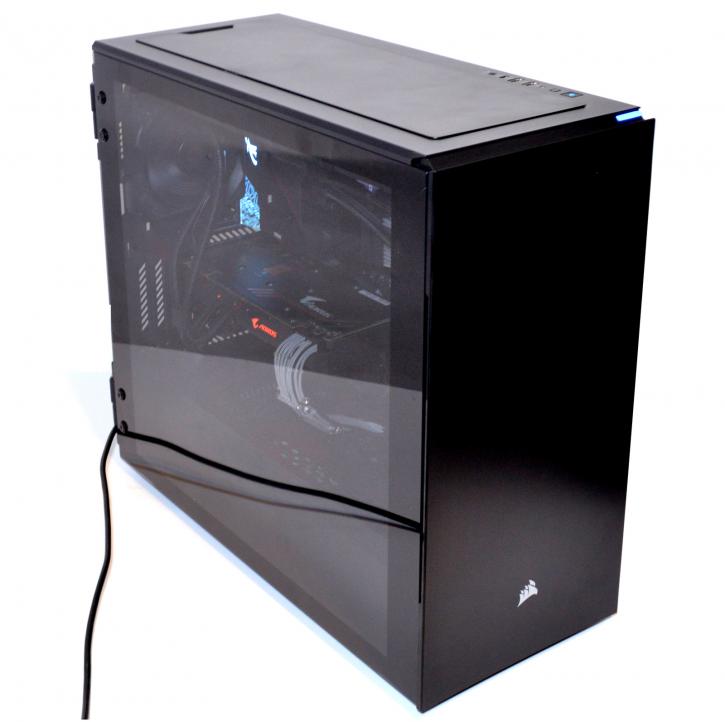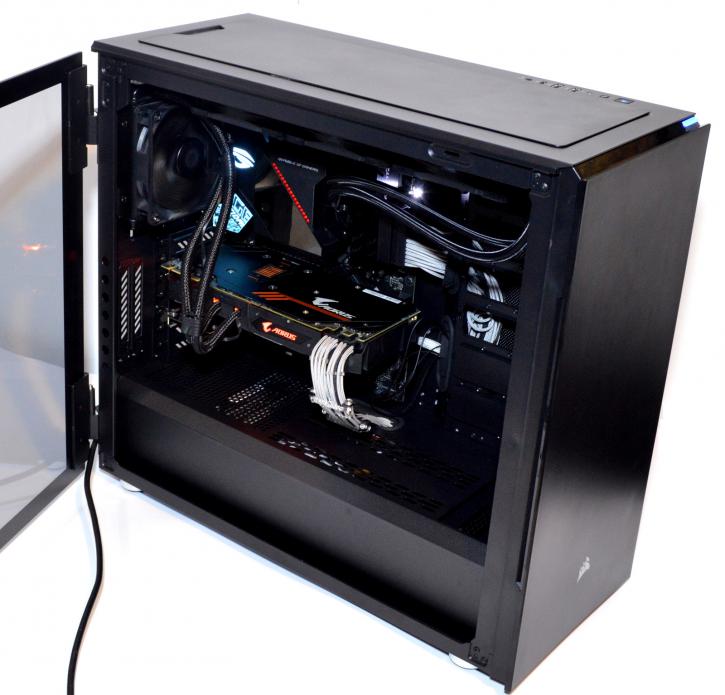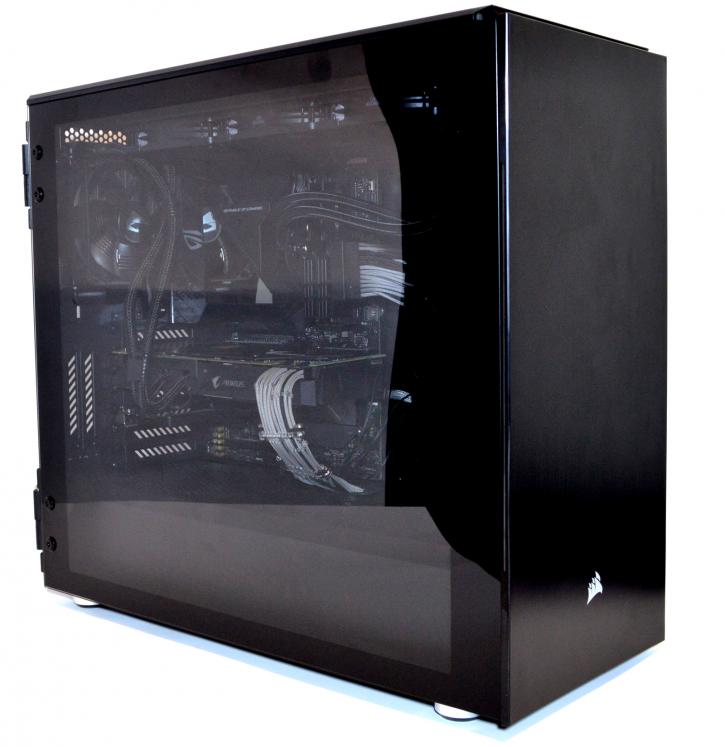Product showcase – the finished build
On this page, you’ll find a selection of photos of the finished build inside the Corsair Carbide 678C. The GPU that we used here has an AIO LCS, and the CPU is cooled (for measurements) either with air (Thermalright True Spirit 120 Direct) or a liquid cooler placed at the front. Below is an example of how can you arrange/fill the chassis provided by the manufacturer:
For the purpose of this section, the Asus Ryujin 360 was used (placed at the top). The Carbide 678C is targeted more at the liquid cooling market (theoretically you can use up to two 360 mm radiators), but an air cooler should do just fine (more details on the following page). The motherboard is an ATX form factor one (and looks relatively small in this Corsair chassis), based on the Z390 chipset, with a de-lidded i7 8700K @ 4.8 GHz inside. The GPU comes from Aorus, and it’s the Waterforce version (GeForce GTX 1080 Ti). The final effect looks really neat. There were no major issues with installing the components inside. A removable AIO tray at the top would have come in handy. The PSU is not mounted using a removable bracket like in quite many other cases today, so it has to be fixed to the back wall of the chassis. On the left of the “dark side” there’s enough space for cables. It’s a bit different on the right side, where the cut-out for backplate is located (only slightly more than 1 cm can make things tricky with thicker cables). It's a pity that there are no (four) optional plastic covers for the places usually taken by HDD cages.
And now some photos of the test system:
